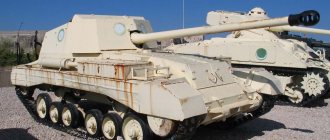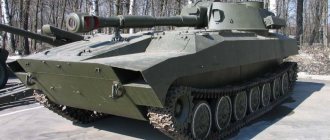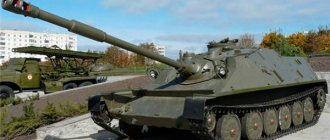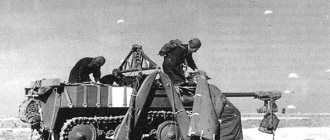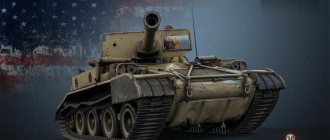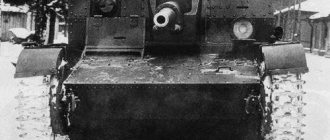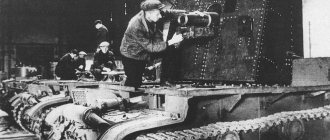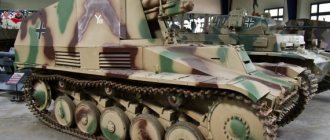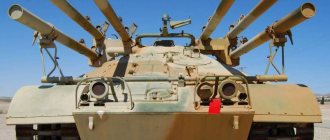The Archer self-propelled gun is the latest Swedish 155 mm multi-purpose self-propelled artillery gun FH77 BW L52 Archer. The idea of creating this system stems from a plan to reform NATO armed forces and increase their mobility. Therefore, when developing the self-propelled guns, a special requirement was placed on the possibility of transporting a combat vehicle inside the latest European transport aircraft Airbus A400.
Story
The installation was put into service in 2011, and by the end of 2014 it is planned to transfer the first 24 units to the Swedish armed forces. The supply plan was actually approved in the spring of 2007, and serial production of the installation began at the beginning of next year.
This air-transportable, armored self-propelled artillery fire system was proposed to be developed and supplied by the Swedish company Bofors Defense, which is part of the SAAB group of companies. The proven FH77 towed gun was used as a basis.
History[edit]
The Swedish company Bofors Defense, which is part of the SAAB group of companies, has created another model of a self-propelled artillery unit - the FH77 BW L52 Archer. The new self-propelled gun competes with such well-known 152-155 mm caliber units as those from South Korea, the German PzH 2000, the French-made CAESAR and the Russian 2S19. The closest analogue of a self-propelled gun can be called the British self-propelled gun M777 Portee.
The FH77 BW L52 Archer was created as part of the NATO military reform plan and is an armored artillery firing system capable of being transported by medium military transport aircraft and heavy helicopters. The Bofors Defense company recommends its development for arming the Swedish army and does not exclude deliveries to other countries.
The basis for the artillery complex was the Haubits 77B (FH77) towed gun, which is reflected in the name of the complex. The new generation self-propelled gun FH77 BW L52 has become an ideal artillery firing system that can be used in the European theater of probable combat operations. Thanks to the system of camouflage capes, the installation becomes approximately three times less noticeable, which allows it to be used in combat operations in wooded areas and in open space.
Peculiarities
The gun is placed in a container with a counterweight that reduces recoil and compensates for the shock when fired. The container stands on a hinged platform built into a mobile platform.
Thanks to the placement of the howitzer on a Volvo 6×6 A30D all-terrain chassis, the installation is combat-ready in all weather conditions and suitable for use on rough terrain. Archer can even move through snowdrifts up to 1 m high.
The standard combat crew of an Archer mobile howitzer consists of a driver, whose workplace is located in the front of the cabin, as well as a commander and gunner, located directly behind the driver. To the left of the commander and gunner there is also a spare seat and display.
The viewing system of the Lemur module includes a daytime CCD camera, an eye-safe laser rangefinder manufactured by Thales Land and Joint CELT2 or a laser designator, and a thermal imager.
Over long distances, self-propelled guns can be transported by air by medium military transport aircraft or heavy helicopters. For such transfers, you can use, for example, the transport A400M.
Armament
The basis of the Archer artillery system is the Haubits 77B (FH77) towed gun. A distinctive feature of this howitzer is the complete automation of loading, aiming and firing. Electronic systems are capable of removing the installation from a combat position in 30 seconds, which makes it possible, having completed a combat mission, to remove the system from combat before enemy artillery fires back.
Archer self-propelled howitzer in action
Vertical aiming angle - from 0 to 70°. The range of horizontal aiming angles is ±75°. True, with a maximum horizontal rotation angle, the maximum elevation angle is limited to 30°. To increase platform stability when firing, a lowering hydraulic outrigger is provided at the rear of the vehicle.
The automatic loading system allows you to get by with just three crew members. Its rate of fire is three shots in 15 seconds at a rate of fire of 8–9 rounds per minute. The barrel life is predicted to be 3000 rounds (50% full charges, 25% medium charges, 25% small charges) or 1500 equivalent full charges.
The installation's ammunition capacity is 40 shells, half of which are in the gun's automatic magazine. The combined day/night sight allows direct fire from a distance of up to 2000 m.
FH77 BW L52 Archer is not afraid of heat, cold or off-road
Bofors Defense has developed a special Uniflex 2 MCS projectile for the Archer, although it is also possible to use most standard foreign artillery ammunition, including the long-range Anglo-American M982 Excalibur, now produced in limited quantities for the US and Swedish armies. The firing range with conventional ammunition is up to 40 km, with the M982 Excalibur projectile – up to 60 km.
The combat algorithm provides for the possibility of delivering multiple simultaneous strikes (MRSI). With this firing pattern, the Archer howitzer fires six shots, with the shells detonating one after another at an interval of 8 seconds.
As an additional weapon, a 12.7 mm M2 Browning heavy machine gun with 200 rounds with a maximum elevation angle of 50° can be installed on the roof of the armored cabin. The weapons complex also includes four grenade launchers for throwing smoke bombs.
It is possible to install a 40-mm automatic grenade launcher with 64 rounds with a maximum elevation angle of 70° on a remote module.
Self-propelled howitzer FH77BW L52 Archer (Sweden)
On September 23, a long-awaited event took place in Sweden. The Ministry of Defense Procurement Directorate (Försvarets Materielverk) has accepted the first batch of FH77BW L52 Archer self-propelled howitzers on a wheeled chassis. Four new combat vehicles have been put into service under the name Artillerisystem 08. In about a year, the Swedish military department intends to receive a second batch of self-propelled artillery units consisting of 20 vehicles. In addition, 24 self-propelled guns will be built for Norway in the near future.
The long-awaited delivery of self-propelled guns to the customer turned out to be due to a number of technical problems. In accordance with the first contracts signed during development, Archer self-propelled guns were supposed to join the Swedish armed forces back in 2011. However, during testing of the prototypes, some shortcomings were identified, which took some time to correct. As a result, the first batch, consisting of only four pre-production combat vehicles, was handed over to the customer only in September 2013. In the future, the Swedish army will receive serial equipment.
Separately, it is necessary to note the situation with artillery in the Swedish army, which developed as a result of the failure to deliver the Archer self-propelled guns. Currently, artillery in the Swedish Armed Forces is represented only by the 9th Artillery Regiment, consisting of two divisions. By the end of 2011, due to the exhaustion of their service life, all existing towed 155-mm Bofors FH77B howitzers were written off, which is why the Swedish armed forces were completely deprived of any field artillery. It was initially assumed that the new Archer self-propelled guns would replace towed howitzers, but the problems that accompanied the creation of the self-propelled gun derailed these plans, and as a result, the Swedish army did not have any artillery for almost two years.
The project to develop a promising self-propelled artillery unit started in 1995. In accordance with the terms of reference, the executing organization had to develop an self-propelled gun armed with a modified FH77B howitzer of 155 mm caliber. The customer demanded to improve the characteristics of the gun by increasing the barrel length. The result of the modernization of the howitzer was the FH77BW modification with a 52-caliber barrel. This is exactly the weapon that was supposed to be used in the new self-propelled gun. In addition, the customer's requirements implied the use of a wheeled chassis.
The preliminary stage of the project took several years. Only in 2003, the Swedish Ministry of Defense signed a contract with Bofors. This document provided for the completion of the project and the subsequent construction of serial self-propelled guns. In 2005, the first prototypes of a promising self-propelled gun were built. Testing of self-propelled guns began after the transformation of the Bofors company into BAE Systems Bofors.
A Volvo A30D with a 6x6 wheel arrangement was chosen as the chassis for the new self-propelled artillery mount. The chassis is equipped with a 340 horsepower diesel engine, which allows the combat vehicle to reach highway speeds of up to 65 km/h. The wheeled chassis is said to be able to move through snow up to one meter deep. If the wheels are damaged, including due to an explosion, the Archer self-propelled gun is capable of continuing to move for some time.
An interesting feature of the Archer self-propelled gun chassis is the architecture used. The A30D has an articulated design that improves maneuverability. At the front of the chassis, above the first axle and up to the articulation unit, is the engine compartment and cockpit. The engine and crew are covered with bulletproof armor corresponding to level 2 of the NATO standard STANAG 4569. The cabin accommodates workplaces for three or four crew members. Depending on the nature of the operation being performed, the crew may have one or two weapons operators. The driver and commander are always present in the crew. On the roof of the cockpit there is space for installing a Protector remote-controlled turret with a machine gun.
All components of the gun are located on the rear module of the articulated chassis. Above the rear axle of the chassis there are mechanisms for lifting and turning the gun turret. The gun is aimed by turning and raising the entire turret. The self-propelled gun mechanisms allow you to aim the gun vertically in the angle range from 0° to +70°. Due to the characteristics of the wheeled chassis, horizontal aiming angles are limited: Archer can fire at targets in the front sector with a width of 150° (75° to the right and left of the axis). To stabilize the vehicle when firing, a double outrigger is used at the rear of the chassis. In the stowed position, the gun module rotates to a neutral position, lowering the howitzer barrel into a special tray covered with covers. The dimensions of the base car required an interesting solution. Thus, when the self-propelled gun is moved to the stowed position, the gun's recoil devices move the barrel to the rearmost position, which allows it to be placed in the existing tray.
The Archer wheeled self-propelled gun is quite large in size. The maximum length of the combat vehicle exceeds 14 meters, width - 3 meters. Without the use of the Protector turret, the height of the self-propelled gun is 3.3 meters, and after installing this combat module it increases by about 60 cm. The combat weight of the Archer self-propelled gun does not exceed 30 tons. The dimensions and weight of the FH77BW L52 self-propelled artillery mount allow it to be transported by rail. In the future, it is planned to use Airbus A400M military transport aircraft for this purpose.
During combat work, the Archer self-propelled gun crew is constantly at their workplaces and does not leave them. All operations are carried out according to commands from control panels. In this regard, all mechanisms of the gun turret operate automatically. The main elements of the turret equipment are the loading mechanisms. According to reports, instead of a single system, the Archer self-propelled gun uses two mechanisms that interact with each other. One of them fires 155mm shells. Mechanized stowage capacity – 21 shells. The second loading system operates with propellant charges supplied in the form of cylindrical blocks with a combustible shell, reminiscent of a charging cap. The Archer self-propelled gun turret stack accommodates 126 blocks with a propellant charge. When using a transport-loading vehicle with a cargo crane, it takes about eight minutes to fully load the ammunition load.
Depending on the task at hand, the crew of the FH77BA L52 Archer self-propelled howitzer can increase or decrease the total amount of propellant mixture by changing the number of charges placed in the gun. With the maximum number of propellant charges, the Archer self-propelled howitzer is capable of sending a projectile to a target at a distance of up to 30 kilometers. The use of active-reactive or guided ammunition increases the firing range to 60 km. The latter is declared for the Excalibur adjustable projectile. The Archer self-propelled gun can fire directly, but in this case the effective firing range does not exceed two kilometers.
The gun's loading mechanisms provide a rate of fire of up to 8-9 rounds per minute. If necessary, the self-propelled gun crew can fire in MRSI mode (the so-called barrage of fire), firing six shots over a short period of time. A salvo of 21 shots (full ammunition) takes no more than three minutes. When developing the Archer self-propelled gun, the need to reduce the time for preparing to fire and leaving a position was taken into account. As a result, the self-propelled gun can carry out some of the preparations for firing while still on the way to the position. Thanks to this, the first shot is fired within 30 seconds after stopping at the desired point on the route. During this time, the outrigger is lowered and the tower is brought into firing position. After completing the fire mission, the crew transfers the combat vehicle to the stowed position and leaves the position. It also takes about 30 seconds to prepare to leave the position.
The FH77BW L52 Archer self-propelled gun is equipped with a modern digital fire control system. Electronic equipment and associated systems allow the crew to carry out all necessary operations without leaving their workplaces. In addition, the automation takes on some of the important actions related to preparation for firing: determining the coordinates of the self-propelled guns, calculating the required pointing angles and firing according to the MRSI algorithm. When using a guided projectile Excalibur or similar, the automation prepares the ammunition for firing.
As already mentioned, the first production Archer self-propelled guns were supposed to be delivered to the troops back in 2011. However, during development, some problems emerged with a number of systems used. It took several years to eliminate the shortcomings, which ultimately led to missed deadlines. Even during testing and development, the first contracts for the supply of serial combat vehicles were signed. In 2008, Sweden ordered eight new self-propelled guns, Norway – one. A few months later, the Scandinavian states decided to jointly finance the project. In accordance with the 2009 contract, BAE Systems Bofors must supply the two countries with 24 self-propelled artillery units.
Negotiations regarding possible export contracts are currently ongoing. The Archer self-propelled gun has attracted the interest of military personnel from Denmark and Canada. These states are negotiating the supply of a certain number of combat vehicles. It is known that Denmark can purchase no more than two dozen self-propelled guns. Until recently, negotiations were ongoing with Croatia. This country was going to buy at least 24 FH77BW L52 self-propelled guns to replace aging Soviet-made equipment. However, economic problems did not allow Croatia to purchase Swedish combat vehicles. As a result of lengthy comparisons and negotiations, the Croatian armed forces decided to buy 18 used PzH2000 self-propelled howitzers from Germany. Delivery of the purchased self-propelled guns will begin in 2014.
Combat and operational characteristics make the FH77BW L52 Archer self-propelled artillery mount a worthy representative of its class of military equipment. However, some technical solutions used in the project at one time led to several difficulties. All this could have a negative impact on the reputation of the project. Due to difficulties in developing the Archer self-propelled guns, the Swedish army was left without field artillery for quite a long time, and several months remain before the start of mass deliveries of new self-propelled guns. It should be noted that even before the start of mass production, the Archer self-propelled gun attracted the attention of potential buyers in third countries. It is quite possible that new contracts for the supply of self-propelled guns will be signed in the very near future.
Based on materials from the sites: https://baesystems.com/ https://militaryparitet.com/ https://bmpd.livejournal.com/ https://army-guide.com/ https://globalsecurity.org/
Protection and modifications
The Archer crew is housed in an armored cabin that provides ballistic protection and is equipped with a system of protection against weapons of mass destruction (chemical, biological and nuclear), as well as a number of means to reduce visibility. The armor protects the crew of the self-propelled howitzer from small arms fire and shell fragments. Protection is also provided against the explosion of high-explosive fragmentation mines weighing up to 6 kg when running over them with the wheels of a howitzer. Remote control of the loading system and guidance/fire systems is also carried out directly from the cabin, which has a climate control system. Inside the cabin there is a 20 liter water tank as well as a 10 liter water cooler. Camouflage functions are assigned to the Barracuda multispectral protective kit.
The FH77 BW L52 self-propelled gun can thus be considered an ideal artillery system of a new generation of self-propelled guns, created for use primarily in the European theater of possible military operations. A system of special camouflage capes makes it possible to reduce the visual and infrared signature of a self-propelled gun by almost three times, which allows the Archer to be used in forest-steppes and wooded areas.
In 2009, a contract was signed with the defense company Akers Krutburk to improve the protection of the FH77 BW L52 Archer self-propelled artillery gun. Priority in this program was given to improving the security of the tractor.
According to the Swedish military, the introduction of the FH77 BW L52 Archer system in combination with a new generation of “smart” projectiles will make it possible to hit targets faster and much more effectively than now.
